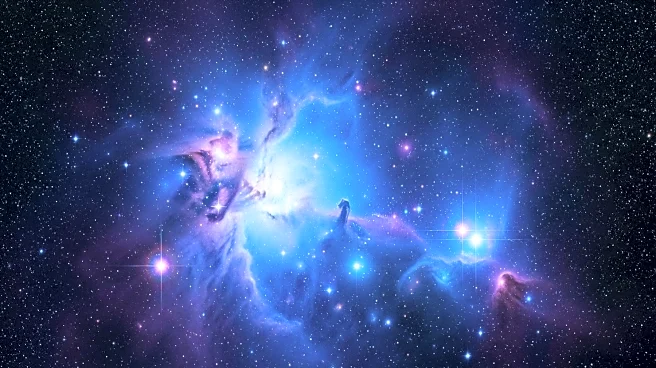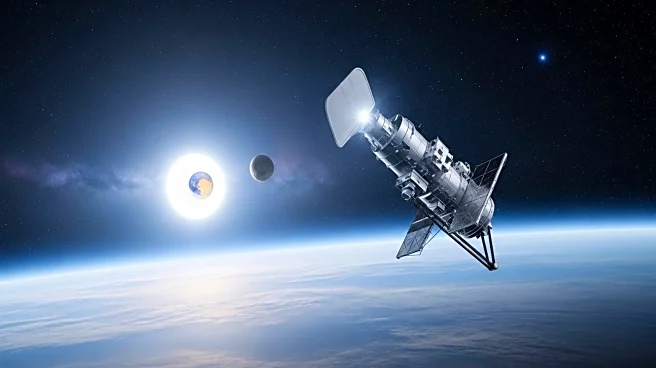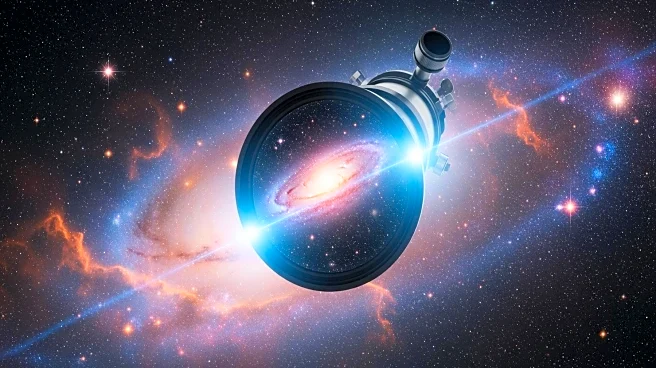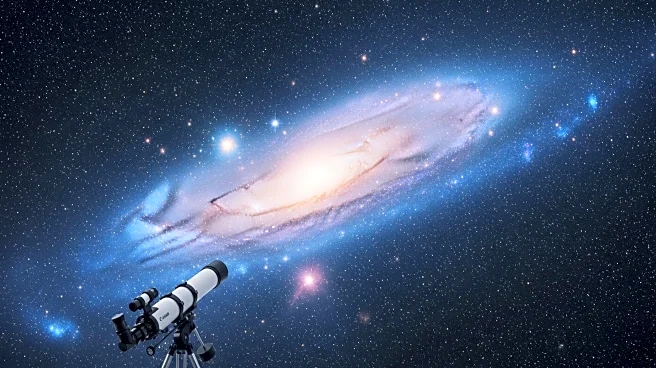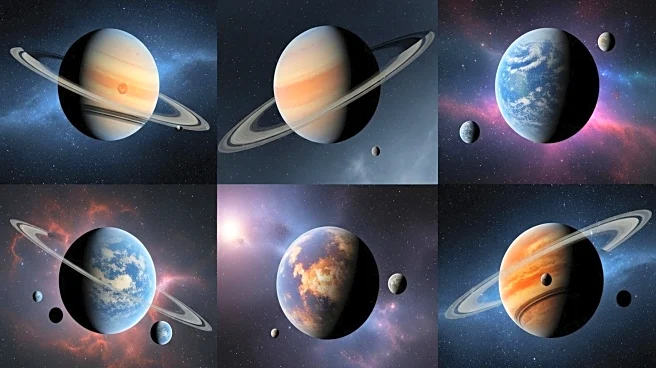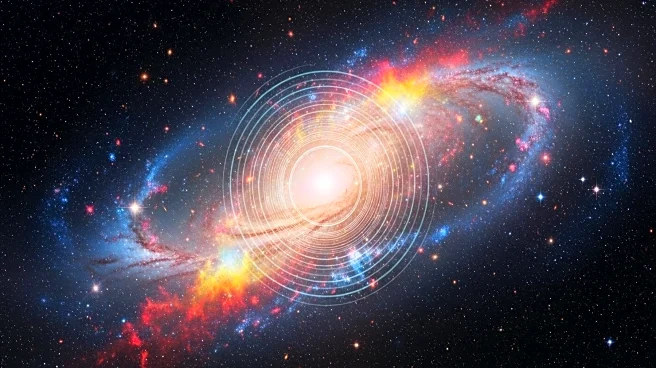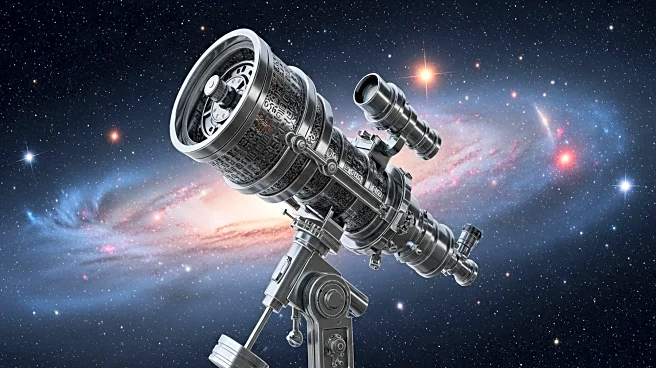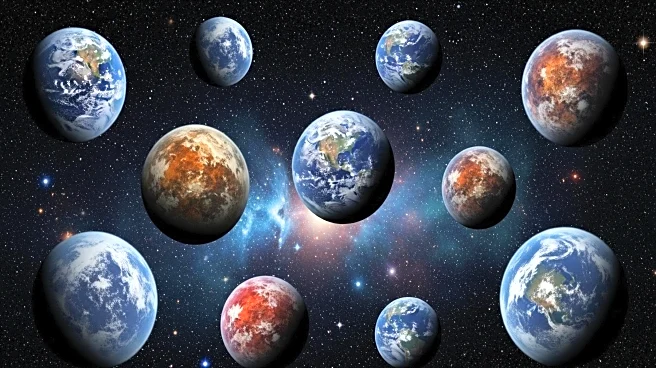What's Happening?
NASA's James Webb Space Telescope has provided new insights into the Sagittarius B2 molecular cloud, the most massive star-forming region in the Milky Way galaxy. Located near the supermassive black hole Sagittarius A*, this region is densely packed with stars and complex magnetic fields. Webb's infrared instruments have revealed young stars and warm dust, offering unprecedented detail into the star formation process. The images show areas so dense with gas and dust that even Webb cannot penetrate them, indicating the presence of future stars. The telescope's MIRI instrument has highlighted the glowing cosmic dust heated by young massive stars, providing a clearer understanding of the molecular richness of the region.
Why It's Important?
The findings from Webb's observations are crucial for understanding the mysteries of massive star formation, particularly in active regions like Sagittarius B2. This research could lead to advancements in astrophysics by providing a clearer picture of how stars form and evolve in dense galactic environments. The ability to observe these processes in such detail helps astronomers develop more accurate models of star formation, which is fundamental to understanding the lifecycle of galaxies. The insights gained could also inform future studies on the impact of supermassive black holes on their surrounding environments.
What's Next?
Further research will focus on analyzing the masses and ages of the stars within Sagittarius B2 to better understand the star formation process. Scientists aim to determine whether the activity in this region has been ongoing for millions of years or if it was triggered by a recent event. The high-resolution data from Webb will continue to be used to explore other star-forming regions in the galaxy, potentially leading to new discoveries about the dynamics of star formation and the role of black holes in these processes.


